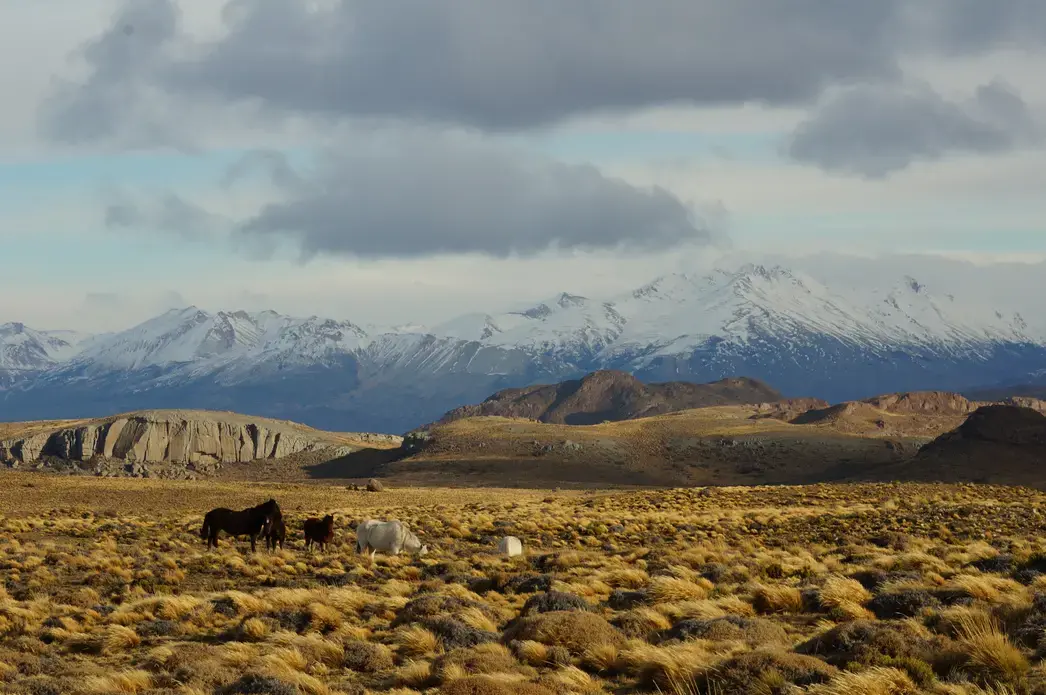In the United States the name Tompkins is rarely recognized unless you have an intimate knowledge of the history of companies such as North Face, Patagonia, and Esprit. However, mentioning that name in Chile elicits passionate responses from even the most unexpected people. Upon retiring from the apparel industry, Doug and Kristine Tompkins have become Chile's largest private landowners and the most controversial conservationists on the continent.
The couple have started half a dozen organizations to support their ultimate goal of "buying land with conservation value to develop a public infrastructure and manage it as a national park with public access that the state would run." In an effort to duplicate their success in the apparel industry, the Tompkins have created a Patagonian eco-empire.
Their biggest project, Pumalin Park, is 300,000 acres and stretches from the coast of Chile to the border with Argentina. For some this is an impressive accomplishment in conservation—others, especially local residents, remain skeptical.
In 2007, Endesa Chile, a subsidiary of the Italian company Enel, and the Chilean company Colbún proposed a joint venture called HidroAysen. The project would involve the construction of five mega-dams near Pumalin Park. Doug Tompkins was the primary financier of the movement against the dams.
As the executive director of Pumalin Park, Hernan Mladinic was very involved with the anti-dam movement. "This is an inconvenient project. It's an unnecessary project," he said. "We can provide energy. We understand Chile needs energy like any society but we can find alternatives that are less environmentally harmful and are the energies of the future. Building dams are technology of the past."
For eight years Mladinic and others sustained the movement, called Patagonia Sin Represas ("Patagonia Without Dams"). In 2011, 100,000 protesters marched in the streets of Santiago. Polls suggested over 60 percent of Chileans were anti-dam in the last four years before the project was rejected. Patagonia Sin Represas revolutionized environmental and citizen-driven protests in Chile.
"We changed the way any company would now approach any project," Lmadinic said. "Location is very important. The size of the project is important. Here we were talking about a huge project that was going to change the energy metrics in Chile. This kind of project produces structural changes."
However, Maria Irena Soto the director of communications for HidroAysen, said that Tompkins's goals came into conflict with the small farmers and ranchers of the community. Tompkins effectively bought estates, which were cattle ranches, and changed the way these were used.
The goal of protecting biodiversity at all cost is as polarizing as the economic goals of international developers like Endesa and Colbun. Ranchers and farmers understand sustainability better than anyone. These individuals have learned how to balance environmental, social, and economic gains and loses. Tompkins' focus on protecting flora and fauna without consideration for humans did not go over well with local communities.
Carlos Olivares, the president of La Voz de Patagonia ("Voice of Patagonia"), started a movement among residents in the towns near Tompkins's planned national park called Patagonia Sin Tompkins ("Patagonia Without Tompkins"). He distributed buttons, stickers, and banners and also organized non-violent protests, saying, "Mr. Tompkins has eliminated like 30,000 sheep and 4,800 cows. He has taken away the labor source of 80 families every year. He destroyed our culture and destroyed our history and now he doesn't want us to develop. He doesn't want us to make roads or bridges. Nothing!" Olivares continued, "I want you all to know that Mr. Tompkins doesn't represent us. He has come to invade our land."
No matter whether the international billionaire philanthropists or the developers win, the outcome for locals may be the same: They will be silenced. Progress has many different definitions, and unfortunately for Chile, individuals and corporations from the U.S. and Europe with capital and political power are taking matters into their own hands to control how they feel Chile should develop. The question is, is this their country to develop? Has globalization reached a point where we are all encouraged to act as global citizens or is the first-world overstepping its boundaries? Why have the Tompkins taken it upon themselves to protect biodiversity in Patagonia and not Alaska, a part of their own country struggling with environmental degradation? Is it simply easier to be a hero in a developing country than in our own?
Patagonia Sin Represas, the movement funded by the Tompkins, has changed activism in Chile. "People think that all this energy and time you are spending doesn't work because it is going to be approved anyway. This happens often when you have these David and Goliath fights, but now many people are saying, wow, if we get organized, we get focused, and we are committed, we can change the course of what reality shows us," said Mladinic.
The last frontier—Patagonia, its people, culture, environment, and economics—may have escaped hydroelectric mega-dams for now, but the conflict continues. While the future of Patagonia remains uncertain, local residents have seen the power of activism. Patagonia is more than its environment. Although outsiders may have left their mark this time, that might not be the case for the future.







